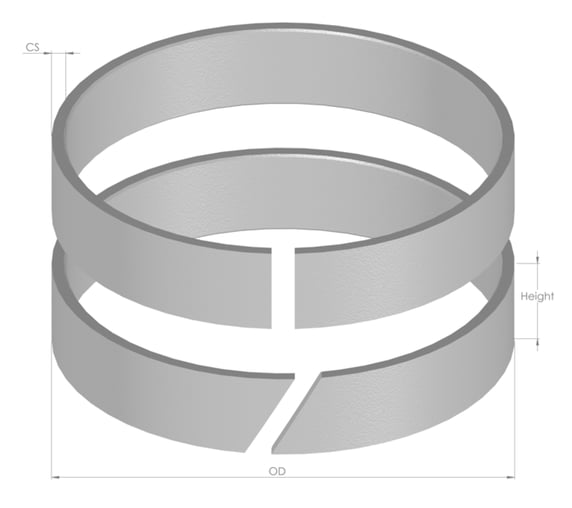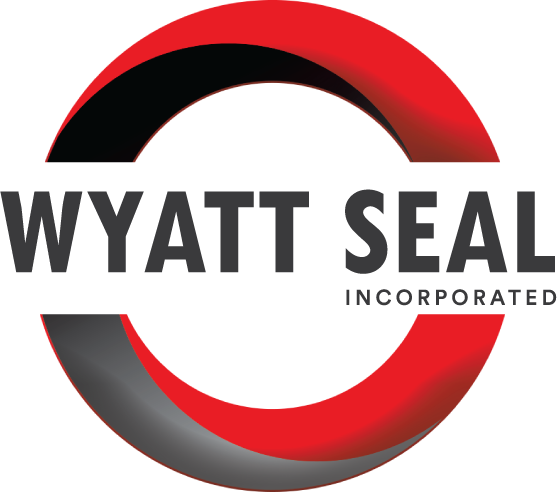Need some assistance?
- Overview
-
By Type
Custom - Standard (AS568)
-
By Brand
Parker - Freudenberg
-
By Material
Nitrile - FKM
- EPDM
- FFKM
- Silicone
- Fluorosilicone
- PTFE
- Polyurethane
- Teflon Encapsulated
- HNBR
- Overview
-
By Type
U-Cups - Wipers
- Wear Rings
Need some assistance?
Need some assistance?
-
O-RINGS
- Overview
-
By Type
Custom - Standard (AS568)
-
By Brand
Parker - Freudenberg
-
By Material
Nitrile - FKM
- EPDM
- FFKM
- Silicone
- Fluorosilicone
- PTFE
- Polyurethane
- Teflon Encapsulated
- HNBR
-
HYDRAULICS & PNEUMATICS
- Overview
-
By Type
U-Cups - Wipers
- Wear Rings
- ROTARY SEALS
- CUSTOM MOLDED
- GASKETS
- MACHINED RUBBER & PLASTICS
- EXTRUDED SHAPES & PROFILES
- SPECIALTY PRODUCTS
Wear Rings
(Hydraulic Cylinder Wear Bands)
HYDRAULICS & PNEUMATICS
For the engineer who deeply cares about the quality of seals and their specific role in various industries, understanding the importance of hydraulic wear rings (also known as hydraulic wear bands) is critical. These mechanical devices, which play a significant role in ensuring smooth hydraulic operations, often determine the difference between success and failure in several applications.
In this guide, you’ll learn what hydraulic wear rings are, how they work, and some specific applications that you might see them in.
What Are Hydraulic Wear Rings/Bands?
Hydraulic wear rings, also known as hydraulic cylinder wear bands, are durable, supportive components used in hydraulic cylinders and other similar mechanisms. They provide a replaceable surface that supports the lateral load of the piston, absorbing transverse forces exerted on it, and preventing metal-to-metal contact between the cylinder and piston. This function limits wear and tear, improving the operational life of the entire system.

Hydraulic Wear Ring Material Description
Hydraulic wear rings are generally made from high-quality materials like composite phenolic resin or PTFE, chosen for their low friction and excellent wear resistance. These materials ensure that the wear rings remain durable and reliable, even under high pressure and temperature conditions.
Bronze-filled PTFE rings are renowned for their strength and resistance to corrosion, while PTFE rings, though softer, offer exceptional low-friction performance and a wide operating temperature range. Composite phenolic resin rings balance the benefits of both, providing a tough, low-friction surface that's also resistant to many chemicals.
Benefits of Hydraulic Wear Rings
Apart from extending the life span of the hydraulic system, wear ring seals also ensure optimal operating conditions by maintaining alignment, reducing contamination, and mitigating friction.
They reduce the risk of system failure, making them an essential component in any operation where reliability is a priority.
Common Uses and Applications
How are hydraulic wear rings used? Here are some common uses and applications across industries.
Construction Machinery
In heavy-duty applications like excavators and bulldozers, hydraulic wear rings ensure smooth operation and longevity, enabling reliable functioning in these critical, high-stress environments.
Industrial Manufacturing
In the heart of factories, wear rings help with the operation of hydraulic presses, automated machinery, and robotic arms, maintaining efficiency and reducing downtime.
Marine Applications
In the punishing marine environment, wear rings are used in equipment such as steering gear and stabilizers, providing corrosion resistance and reducing wear from constant use.
Aerospace
The use of wear rings in landing gear, flight controls, and other hydraulic systems ensures reliable, safe operations in this high-stakes industry.
Energy Sector
In hydroelectric power plants or oil and gas extraction equipment, wear rings take on high-pressure, corrosive environments, keeping the machinery running and reducing maintenance costs.
Things to Consider When Selecting Wear Rings
When selecting hydraulic wear rings, you need to consider obvious factors like cost, size, and compatibility with your system. But you should also think about:
- Material Properties: Depending on your specific application, you might need wear rings resistant to extreme temperatures, corrosive environments, or high pressures. Carefully review the properties of each material to make the best selection.
- Maintenance and Replacement Schedule: Choose wear rings that match the expected maintenance intervals of your machinery. Long-lasting materials may be more cost-effective in the long run.
- Regulatory Requirements: In some industries, specific materials may be required or banned to ensure safety or environmental compliance. Ensure your chosen wear rings meet all necessary standards.
Reach Out to Wyatt Seal
Hydraulic wear rings play a crucial role in the longevity and efficiency of numerous applications across industries. From construction to the energy sector, their benefits extend far beyond mere cost savings, ensuring reliability and safety in numerous applications.
For engineers who strive for quality, performance, and reliability, Wyatt Seal offers the best option for high-quality hydraulic wear rings. With extensive knowledge, we can guide you in selecting the ideal wear rings to meet your specific requirements. Don't hesitate to reach out to Wyatt Seal for guidance and expertise in all your sealing needs.
Looking to find the right wear ring for your application? Let’s talk

